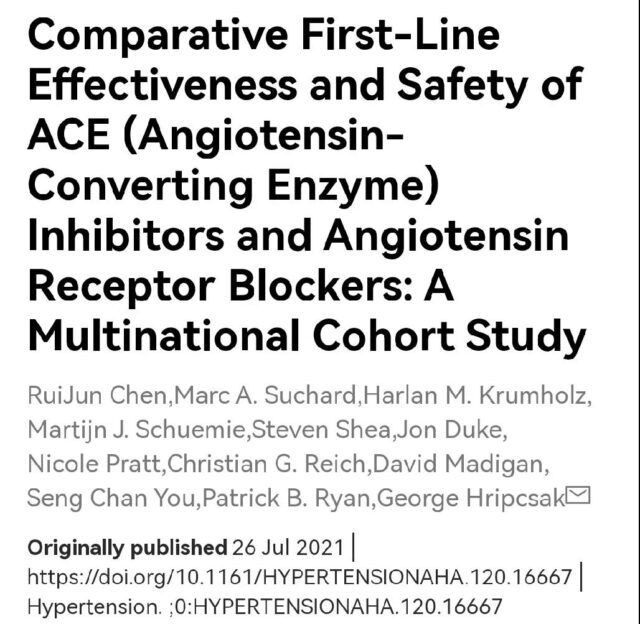The antihypertensive effect of ARB is equivalent to that of ACEI
- Normal Liver Cells Found to Promote Cancer Metastasis to the Liver
- Nearly 80% Complete Remission: Breakthrough in ADC Anti-Tumor Treatment
- Vaccination Against Common Diseases May Prevent Dementia!
- New Alzheimer’s Disease (AD) Diagnosis and Staging Criteria
- Breakthrough in Alzheimer’s Disease: New Nasal Spray Halts Cognitive Decline by Targeting Toxic Protein
- Can the Tap Water at the Paris Olympics be Drunk Directly?
The antihypertensive effect of ARB is equivalent to that of ACEI, and with fewer side effects!
The antihypertensive effect of ARB is equivalent to that of ACEI. Angiotensin-converting enzyme inhibitors (ACEI) and angiotensin receptor blockers (ARB) are both first-line antihypertensive drugs recommended by the guidelines, but there are few head-to-head studies.
A study published in the journal Hypertension on July 26 compared the effectiveness and safety of ACEI and ARB in antihypertensive therapy in the real world.

The study included all hypertensive patients who started using ACEI or ARB monotherapy between 1996 and 2018. These patients came from 8 databases in the United States, Germany, and South Korea.
The primary endpoints were acute myocardial infarction, heart failure, stroke, and combined cardiovascular events. The study also observed 51 secondary and safety endpoints, including angioedema, cough, syncope, and electrolyte abnormalities.
Research results
In 8 databases, we identified 2,297,881 (nearly 2.3 million) patients with hypertension who were initially treated with ACEI and 673,938 were initially treated with ARB.
The primary endpoint-acute myocardial infarction (the hazard ratio of ACE to ARB was 1.11), heart failure (hazard ratio 1.03), stroke (hazard ratio 1.07) or compound cardiovascular events (hazard ratio 1.06) did not differ significantly.
Among the secondary and safety endpoints, patients using ARB had a significantly reduced risk of angioedema, cough, pancreatitis, and gastrointestinal bleeding.
Expert Comments:
These findings support that when starting hypertension treatment, if RAS blockers are to be selected, the ARB should be given priority.
In the study, the most prescribed ACEI was lisinopril (80%), followed by ramipril and enalapril; the most ARB was losartan (45%), followed by valsartan and olmesartan.
The follow-up time ranged from approximately 4 months to more than 18 months. The data showed that ACEI and ARB were not significantly different in terms of primary endpoints (myocardial infarction, heart failure, stroke, etc.).
In terms of safety endpoints, ARB showed fewer side effects, while ACEI showed angioedema (HR 3.31), cough (HR 1.32), acute pancreatitis (HR 1.32), gastrointestinal bleeding (HR 1.18) and abnormal weight loss (HR 1.18) The risk is higher.
In fact, in our clinical practice, the antihypertensive prescription of ARB has far surpassed that of ACEI, and it was originally caused by the side effect of ACEI’s cough.
The author pointed out that although the association between ACEI and pancreatitis has been reported before, the association with gastrointestinal bleeding may be a new discovery. No previous studies have compared the effects of the two drugs on the risk of pancreatitis.
(source:internet, reference only)
Disclaimer of medicaltrend.org
Important Note: The information provided is for informational purposes only and should not be considered as medical advice.



